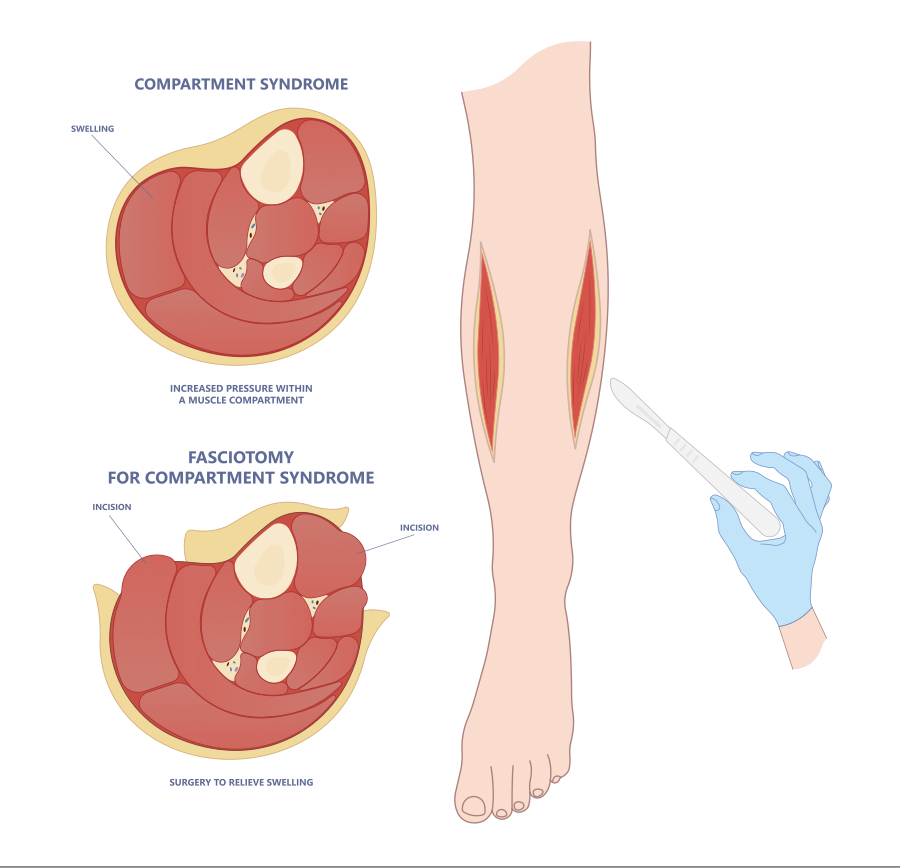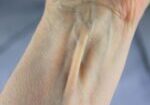Exertional (Chronic) Compartment Syndrome of The Hand
Filed under Treatments
By: Tommi Long
What is it?
Chronic exertional compartment syndrome (CECS) is an exercise-induced condition affecting the muscles and nerves, leading to pain, swelling, and reduced muscle function due to increased pressure and restricted circulation. While most commonly, it impacts the arms and legs, it is rare to happen in the hand(s). CECS is most prevalent in young adult runners and athletes who participate in repetitive activities, although anyone can develop this condition.
Signs and Symptoms:
- Weakness
- Bludging around muscle
- Tightness
- Pain while completing stretches
- Numbness and tingling
- Aching, burning, or cramping pain in the affected muscle

How is CECS diagnosed?
- X-ray to rule out any fractures or bone injuries
- MRI evaluates the compartments’ muscles and structures. Advanced MRIs can also assess the fluid volumes of each compartment during and after exercise.
- Near-infrared spectroscopy (NIRS) is a newer technique for measuring the amount of oxygen in the blood and tissue of the affected limb. It is performed at rest and after exercise.
- Compartment pressure testing measures the pressure within your muscle compartments by inserting a needle into several different places. This test is the gold standard for diagnosing chronic exertional compartment syndrome.
Treatments:
Surgical and nonsurgical methods are available for this condition, although nonsurgical options must immediately stop or significantly limit activities that cause compartment syndrome. Nonsurgical options typically don’t have long-lasting effects for true CECS.
Nonsurgical options-
- Break from exercise or activity
- Medications for pain and anti-inflammatory
- Therapy (manual therapy, ergonomics, modified environment, strengthening, flexibility)
- Botulinum toxin A injections into affected muscles
- Orthosis
Surgical Options-
- Research suggests fasciotomies are the most effective treatment (Cutting open tissues encasing affected muscle compartments to relieve pressure) or (small incisions to reduce recovery time)
- Selective releases of the thenar and hypothenar compartments
References:
Dwyer, C. L., Soong, M. C., & Kasparyan, N. G. (2016). Chronic exertional compartment syndrome of the hand: Case report and literature review. HAND, 12(3). https://doi.org/10.1177/1558944716668826
Mayo Foundation for Medical Education and Research. (n.d.). Chronic exertional compartmentsyndrome. Mayo Clinic. https://www.mayoclinic.org/diseases-conditions/chronic-exertional-compartment-syndrome/symptoms-causes/syc-20350830
Phillips, J. H., Mackinnon, S. E., Murray, J. F., & McMurtry, R. Y. (1986). Exercise-inducedchronic compartment syndrome of the first dorsal interosseous muscle of the hand: A case report. The Journal of Hand Surgery, 11(1), 124–127. https://doi.org/10.1016/s0363-5023(86)80118-6
What are the main signs of compartment syndrome?. Cleveland Clinic. (2024, August 5).https://my.clevelandclinic.org/health/diseases/15315-compartment-syndrome
More To Read
Cyclist Injuries: Avoiding Hand Injuries and Treatment Strategies
RAPID REVIEW Chiaramonte, R., Pavone, P., Musumeci, G., Di Rosa, M., & Vecchio, M. (2022). Preventive strategies, exercises, and rehabilitation of hand neuropathy in cyclists: A systematic review. Journal of Hand Therapy, 35, 164-173. The Skinny: The study was a systematic review done to get clarification on the diagnostic process for cyclist injury specifically for…
Read MoreExploring Unique Hand Anatomy
Exploring Unique Hand Anatomy The human hand is a marvel of intricate design with a combination of fine motor capabilities and strength that enable us to perform fine motor tasks ranging from delicate surgery to more gross motor tasks such as carrying heavy loads. However, no two hands are exactly alike. Anatomical variations while they…
Read MoreVolkmann’s Contracture
Written by Melissa Miller Introduction Volkmann’s contracture is a rare condition that occurs after injury to the elbow and upper arm, typically from a crush injury. This condition can occur when acute compartment syndrome is left untreated. If unrecognized, Volkmann’s contracture can lead to a permanent deformity in the hand and forearm. Hand therapists are…
Read MoreTrigger Finger… Quick and Dirty!
This is for you… Hand Therapists! Stenosing tenosynovitis, otherwise known as trigger finger, is a common condition affecting children and adults of all ages. Fast Facts Trigger finger usually occurs at the A1 pulley It occurs with inflammation of the tendons and sheaths of fds and fdp The digit can lock in both flexion and…
Read MoreSign-up to Get Updates Straight to Your Inbox!
Sign up with us and we will send you regular blog posts on everything hand therapy, notices every time we upload new videos and tutorials, along with handout, protocols, and other useful information.






